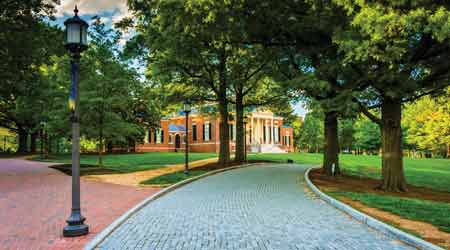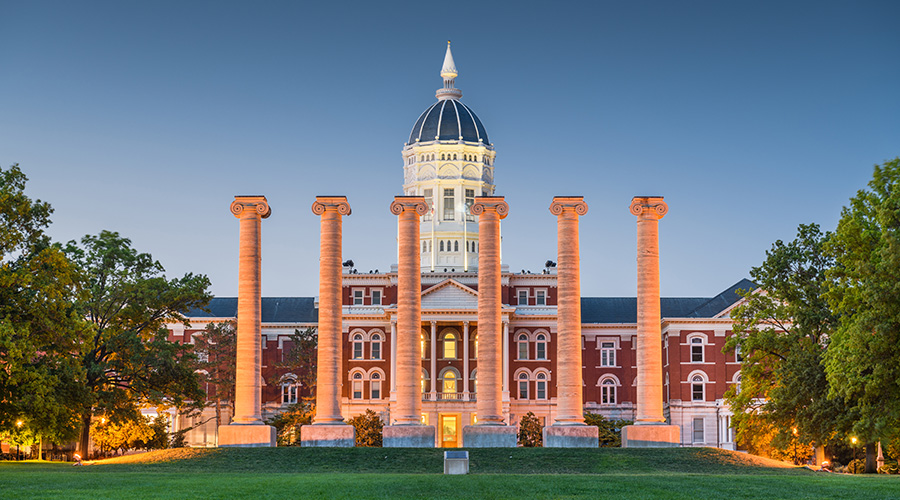 Managers who adapt their current practices on sustainability can help their department achieve the ultimate goal of sustainable, strategic management.
Managers who adapt their current practices on sustainability can help their department achieve the ultimate goal of sustainable, strategic management.PGMS: Conserving Water for Sustainability
Whether located in a region facing drought or not, managers in many regions are trying to curtail water usage. Prepared in conjunction with the Professional Grounds Management Society.
Watching the water
Managers in many regions are trying to curtail water use, whether or not they are located in drought areas. These conservation desires have led to the use of new irrigation technologies, such as central control systems, flow sensors, subterranean drip systems, and high-efficiency irrigation heads.
Although the upfront cost of remote site-monitoring systems can seem high, they generally deliver a return on the investment within the first 8-10 years, based on PGMS membership feedback. One of the most important components of these new systems is training staff to understand, interpret and adapt the data these systems provide, especially as grounds management becomes a data-driven profession.
Many types of organizations are finding branding benefits from becoming more sustainable. In higher education, prospective students not only prefer green campuses but will seek campuses that offer a progressive approach to sustainability, including such state-of-the-art features as solar-powered dorms.
Since 2010, The Princeton Review has released its yearly Top 50 Green Campuses. The publication determines an institution’s rank based on its commitment to sustainability in academic offerings, campuses infrastructure, activities, and career preparations. What does that mean for higher education grounds management? It means the ability to adapt and integrate stakeholder demands, such as the desire for campus aesthetics, while maintaining a commitment to improve sustainability.
The grounds operations department at Abilene (Texas) Christian University has been successful in partnering with the university’s biology department to educate students on native plants around campus. Their use of student curiosity about operations and resources enabled the campus to become a living-learning laboratory.
Transparency and communication with stakeholders to identify short- and long-term maintenance strategies not only help with implementation. They also allow for direct feedback and secures a common goal to produce positive results. Many campuses have implemented educational signage that explains ongoing maintenance, labels interactive and educational landscape spaces, and identifies campus clubs and science departments as partners — all steps that help maximize the stakeholder experience.
Throughout grounds management, the expectation to do more with less in terms of labor, budget and equipment has placed increased pressure on managers and their staffs to deliver more sustainable, efficient operations while meeting stakeholder demands for a visually appealing landscape. As internal and external challenges increase, departments are expected to adapt quickly, often with limited time, money, and resources.
As the consolidation of grounds departments forces more managers to take on new responsibilities — including solid-waste management, recycling, motor pool supervision, event setup, street lighting, and warehouse delivery — long-term investments in staff training are vital. New landscape features, such as roof gardens and living walls are becoming common, but they require special maintenance considerations. To ensure appropriate post-installation maintenance for these elements, staff members need the tools and training to incorporate them while managing existing responsibilities and budget limits.
Pursuing green industry performance-based evaluation programs can help managers review, develop, and implement short- and long-term strategies to deliver stable, successful, responsive, consistent and sustainable operations.
Stephanie Bruno is the associate executive director for the Professional Grounds Management Society (PGMS) — www.pgms.org — an individual membership society of grounds professionals advancing the grounds management through education and professional development. LinkedIn: www.linkedin.com/groups/4173565. Facebook: www.facebook.com/ProfessionalGroundsManagementSociety.
Related Topics:















